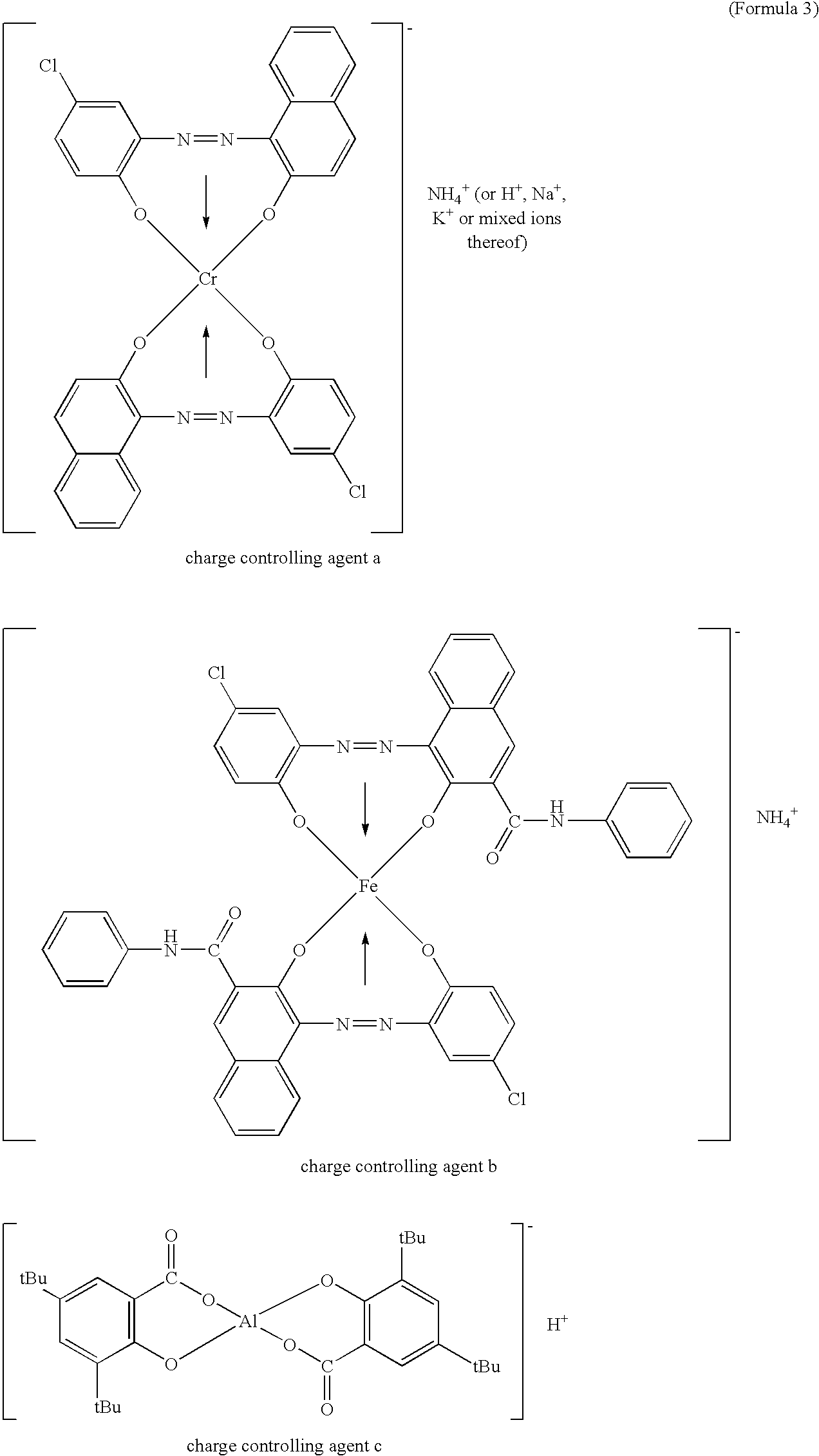Toner used in electrophotography having toner particles and silica powder
a technology of toner particles and electrophotography, which is applied in the field of toner, can solve the problems of easy fogging during a long time, insufficient for achieving high-speed and high-resolution image formation, and difficult improvement in latent image reproducibility, and achieves excellent density stability, line reproducibility and dot reproducibility, and high resolution.
- Summary
- Abstract
- Description
- Claims
- Application Information
AI Technical Summary
Benefits of technology
Problems solved by technology
Method used
Image
Examples
example 1
[0202]
The binder resin 1100parts by massMagnetic iron oxide particles60parts by mass(average particle diameter: 0.15 μm; coercive force(Hc) at 796 kA / m: 11.5 kA / m; saturation magnetization(σs): 90 Am2 / kg; and residual magnetization (σr): 16Am2 / kg)A wax b (Fischer-Tropsch wax; melting4parts by masspoint: 105° C.)A charge controlling agent c2parts by mass
[0203]The above materials were premixed by a Henschel mixer, and then melted and kneaded by a twin-screw extruder. At this time, the staying time was controlled such that the temperature of the kneaded resin became 150° C.
[0204]The obtained kneaded material was cooled, coarsely crushed by a hammer mill, and pulverized by a turbo mill; and the obtained finely pulverized powder was classified using a multi-division classifier utilizing the Coanda effect to obtain toner particles having a weight average particle diameter of 5.8 μm. 1.0 part by mass of a hydrophobic inorganic fine powder “a” (silica; BET: 140 m2 / g; and hydrophobized with ...
examples 2 to 5
[0215]Toners 2 to 5 were obtained as in Example 1, but with the formulations described in Table 4 (hydrophobic fine inorganic powders are described in Table 3; fine silica powders in Table 1; and waxes in Table 2). Physical properties of the toners thus obtained are shown in Table 5. The results of tests similar to Example 1 are shown in Tables 6, 7 and 8.
example 6
[0216]A toner 6 was obtained as in Example 1, but with the formulation described in Table 4 (a hydrophobic fine inorganic powder is described in Table 3; a fine silica powder in Table 1; and a wax in Table 2) and with the rotation frequency of the turbo mill raised by 10%. Physical properties of the toner thus obtained are shown in Table 5. The results of tests similar to Example 1 are shown in Tables 6, 7 and 8.
PUM
| Property | Measurement | Unit |
|---|---|---|
| specific surface area | aaaaa | aaaaa |
| specific surface area | aaaaa | aaaaa |
| pore diameters | aaaaa | aaaaa |
Abstract
Description
Claims
Application Information
 Login to View More
Login to View More - R&D
- Intellectual Property
- Life Sciences
- Materials
- Tech Scout
- Unparalleled Data Quality
- Higher Quality Content
- 60% Fewer Hallucinations
Browse by: Latest US Patents, China's latest patents, Technical Efficacy Thesaurus, Application Domain, Technology Topic, Popular Technical Reports.
© 2025 PatSnap. All rights reserved.Legal|Privacy policy|Modern Slavery Act Transparency Statement|Sitemap|About US| Contact US: help@patsnap.com



